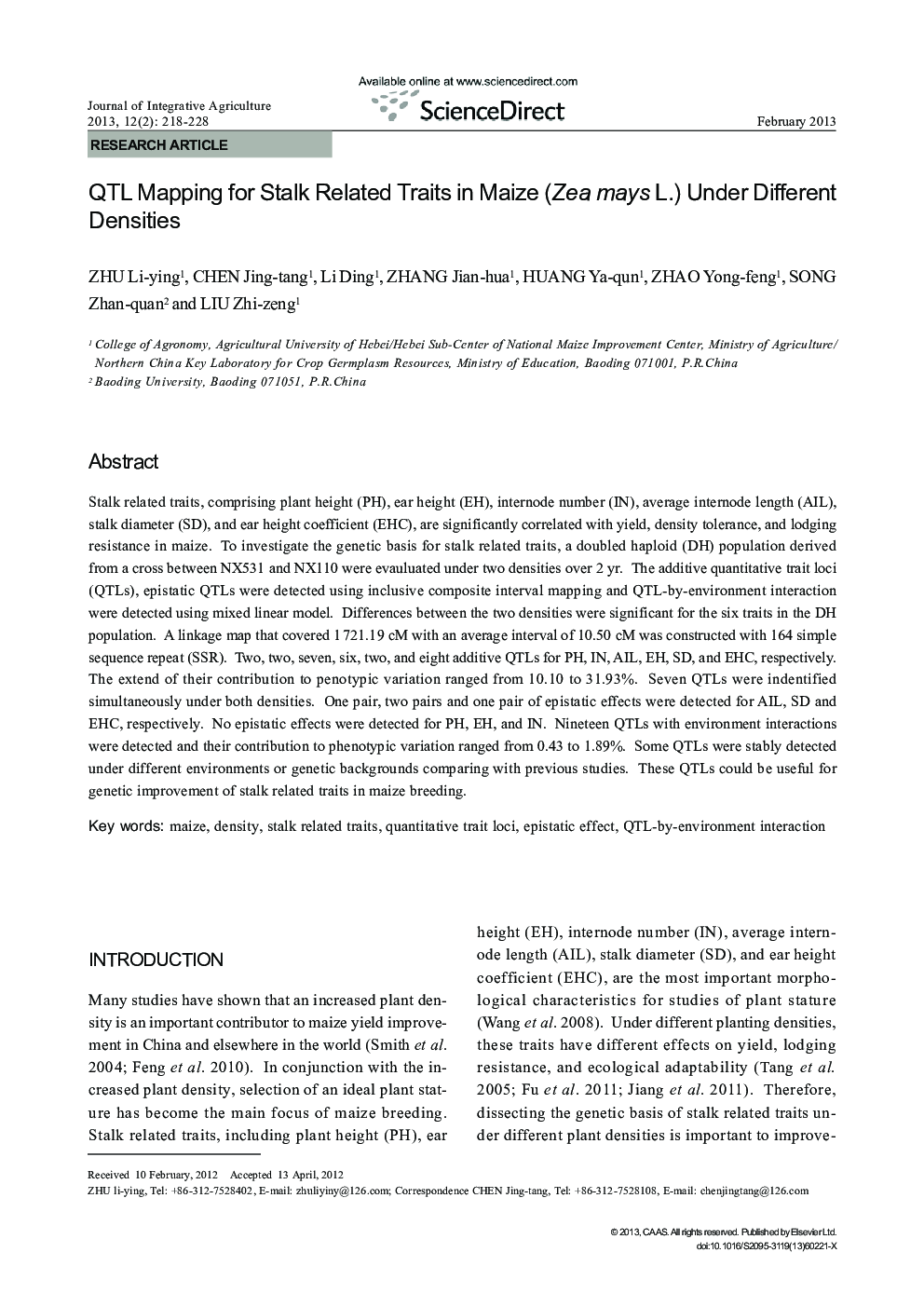| Article ID | Journal | Published Year | Pages | File Type |
|---|---|---|---|---|
| 4494819 | Journal of Integrative Agriculture | 2013 | 11 Pages |
Stalk related traits, comprising plant height (PH), ear height (EH), internode number (IN), average internode length (AIL), stalk diameter (SD), and ear height coefficient (EHC), are significantly correlated with yield, density tolerance, and lodging resistance in maize. To investigate the genetic basis for stalk related traits, a doubled haploid (DH) population derived from a cross between NX531 and NX110 were evauluated under two densities over 2 yr. The additive quantitative trait loci (QTLs), epistatic QTLs were detected using inclusive composite interval mapping and QTL-by-environment interaction were detected using mixed linear model. Differences between the two densities were significant for the six traits in the DH population. A linkage map that covered 1 721.19 cM with an average interval of 10.50 cM was constructed with 164 simple sequence repeat (SSR). Two, two, seven, six, two, and eight additive QTLs for PH, IN, AIL, EH, SD, and EHC, respectively. The extend of their contribution to penotypic variation ranged from 10.10 to 31.93%. Seven QTLs were indentified simultaneously under both densities. One pair, two pairs and one pair of epistatic effects were detected for AIL, SD and EHC, respectively. No epistatic effects were detected for PH, EH, and IN. Nineteen QTLs with environment interactions were detected and their contribution to phenotypic variation ranged from 0.43 to 1.89%. Some QTLs were stably detected under different environments or genetic backgrounds comparing with previous studies. These QTLs could be useful for genetic improvement of stalk related traits in maize breeding.
